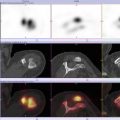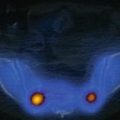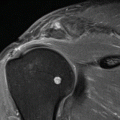Headache (any head pain)
Vomiting
Age older than 60 years
Intoxication
Deficit in short-term memory (persistent anterograde amnesia)
Physical evidence of trauma above the clavicle
Seizure
The wide spectrum of concussion signs is divided in cognitive, affective, somatic and sleep disturbance (Table 7.2). As isolated variables, these factors are not specific for concussion. However, in case of a head trauma, these symptoms are susceptible for the diagnosis of concussion. In case of the presence of loss of consciousness or confusion, the diagnosis of concussion is obvious. When the diagnosis is less certain, a standardised assessment using the Sport Concussion Assessment Tool (SCAT) 2 can aid in the diagnosis (McCrory 2009). The SCAT2 evaluates symptoms, cognitive function and balance. A player with a disturbance of these functions after head trauma can be considered as a patient suffering from concussion. Ideally, it should be performed in the preseason and compared to the athlete’s baseline value. The SCAT2 can be a very helpful tool which is easy to administer. However, it should not be used as a solitary test to diagnose concussion and measure recovery for return-to-play decision. At present there are no accepted grading systems to express concussion severity; the Cantu Scale is an example of a grading system with a long history of use. There is currently no single questionnaire, neuropsychological test, biomarker or additional neuroimaging modality (e.g. functional magnetic resonance brain scanning) to classify a concussion. However, studies in this field are ongoing.
Table 7.2
Possible signs and symptoms of concussion
Cognitive | Somatic | Affective | Sleep disturbance |
|---|---|---|---|
Confusion | Headache | Emotional lability | Trouble falling asleep |
Amnesia | Dizziness | Irritability | Sleeping more than usual or sleeping less than usual |
Disorientation | Balance disruption | Fatigue | |
Feeling ‘zoned out’ | Nausea or vomiting | Anxiety | |
Loss of consciousness | Visual disturbances | Sadness | |
Vacant stare | Phonophobia | ||
Inability to focus | |||
Delayed verbal and motor responses | |||
Incoherent speech | |||
Excessive drowsiness |
Return to play is a challenging decision. The athlete has to be recovered fully, and symptom evaluation only is not adequate for this decision. A concussed athlete should be monitored multiple times by a physician to evaluate recovery of symptoms, cognitive function and balance. In general, a graduated return-to-play protocol is recommended with an initial brief period of cognitive and physical rest of 2–3 days. As symptoms resolve, a graduated increase in activities can be started with subsequently light aerobic exercise, sports-specific training, training drills without body contact and later on contact in a group and finally return to match playing. According to the Zurich consensus, statement players should be allowed to progress to the next stage when they remain asymptomatic for 24 h after training. If symptoms persist or recur, the player is advised to step back in the protocol. In case of a successful recovery, the player can return to sports within a week. In the majority of cases, full recovery occurs in 7–10 days.
There are several reasons for this conservative programme. It is known that an athlete is at greater risk for further injury when the recovery is not yet fully completed. This injury may be musculoskeletal or a second concussion, due to the decreased reaction time of the athlete. Another consequence of repeat concussions is the chance of developing ‘postconcussion syndrome’. Associations have been postulated between repeat concussions and chronic traumatic encephalopathy and with depression, cognitive impairment and other mental health problems in a small number of athletes. The definition of this postconcussion syndrome is ‘a prolonged symptom duration after concussion’. The exact timeframe for this diagnosis, however, remains unclear according to the variable definitions used in literature (Jotwani and Harmon 2010). The most frequently used cut-off is the presence of more than 3 months of symptoms (Prigatano and Gale 2011). Symptoms persisting from 1 to 6 weeks have been suggested as thresholds for the diagnosis of postconcussion syndrome in athletes. The pathophysiology is not well understood, and hypotheses range from poor coping mechanisms to the occurrence of biomechanical forces on the brainstem, forebrain and temporal lobe. The clinical features can be divided into physical symptoms, emotional changes and cognitive disorders and cover a wide gamut of signs and symptoms. In cases of suspected postconcussion syndrome, the standard additional imaging modalities are applied. Novel modalities, such as functional MRI, are promising and studies are upcoming. The mainstay of the management of this condition is observation and adjustment of activity. Currently, there are no other evidence-based treatments for the sports medicine physician to apply. In older athletes with a history of recurrent concussions, it is known that approximately 10 % will have persisting symptoms of postconcussion syndrome, which further emphasises the need for prevention of recurrent concussions (Prigatano and Gale 2011).
7.4.2 Facial Injuries
In contact sports there is a higher frequency of facial injuries. According to the literature, 3–29 % of facial injuries are due to sporting activities (Reehal 2010). The complex anatomy in this region and the high variability in types of injuries lead to a challenging diagnosis and treatment of these injuries.
The clinical assessment of facial injuries is similar in case of other acute on-field injuries and starts with control of airway, breathing, circulation, level of consciousness and cervical spine injuries. A practical series or steps in the evaluation of facial injuries are provided in Table 7.3 (Brukner and Khan 2012).
Table 7.3
Practical steps in the evaluation of facial injuries
Evaluate airway, breathing, circulation, level of consciousness and possibility of cervical spine injuries |
Discover trauma mechanism |
Locate patient’s pain |
Evaluate eye injury symptoms, diplopia and blurred vision |
Search for signs of skull base fractures, cerebrospinal fluid leakage from the nose or ear and ‘battle sign’ at the mastoid bone or ‘raccoon eyes’ which may not be present at the initial stages |
Inspect for nasal haematomas and deviations of the nasal septum |
Inspect the external auricle and ear for haematomas |
Look for facial asymmetry, such as structural depressions or a sunken eye globe |
Observe for wounds that can overly suspected fractures |
7.4.3 Soft Tissue Injuries
The most prevalent face injuries in sports are lacerations of the skin and contusions, which are easy to diagnose. However, thorough examination of the underlying bone and neurological examination in case of suspected skull fracture or concussion should be performed. Treatment of contusions generally starts with immediate ice application and compression of the affected area. Lacerations can be treated by applying adhesive strips, tissue adhesives, suturing or skin stapling. The role of antibiotic treatment as prophylactic management remains controversial. Tetanus prophylaxis should be considered if this is not up to date (Reehal 2010).
7.4.4 Nasal Injuries
The most prominent bones in the face are formed by the nose, which is the most frequently fractured bone in the adult face (Reehal 2010). There is an extensive vascularisation network around the nasal bones, and the clinically most relevant part is Kiesselbach’s plexus, located in the nasal septum. A nasal fracture is therefore frequently accompanied by epistaxis. Other symptoms include pain, swelling, deformity, crepitations and increased mobility.
Additional imaging is usually not requested because undisplaced fractures do not require treatment, and displaced fractures are clinically easy to distinct.
Treatment consists of controlling the epistaxis. In most of the cases, this bleeding is originated from Kiesselbach’s plexus on the anterior side, which can be treated by digital pressure through pinching the nose. If this measure fails, the physician can choose for nasal packing combined with a nasal decongestant spray. If these interventions do not lead to bleeding control, referral to a specialist is needed for arterial ligation or embolisation (Reehal 2010). Nasal fractures can be treated with a delayed closed reduction when swelling has settled (Higuera et al. 2007).
Stay updated, free articles. Join our Telegram channel

Full access? Get Clinical Tree







